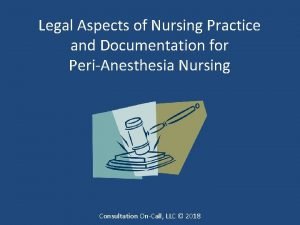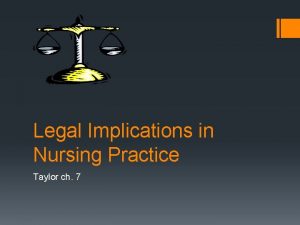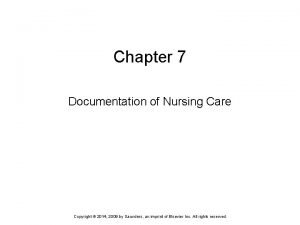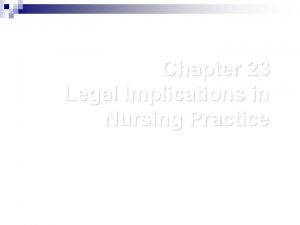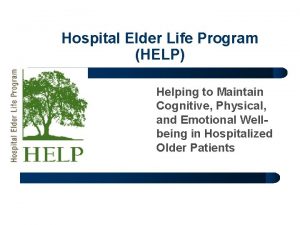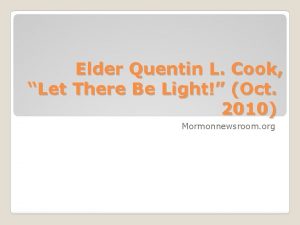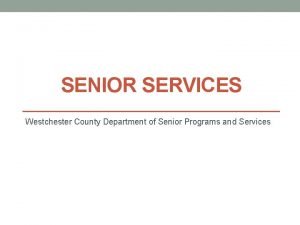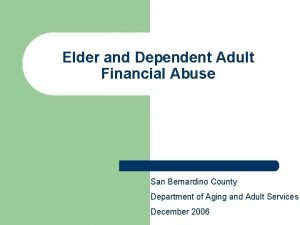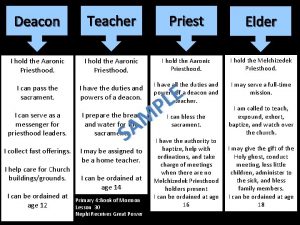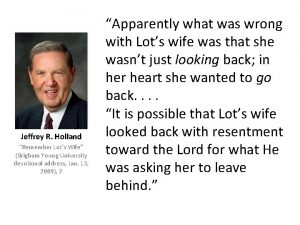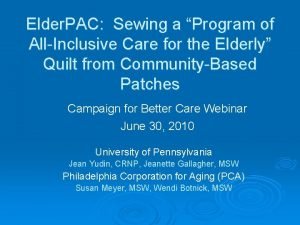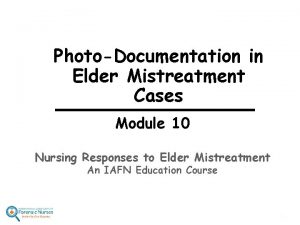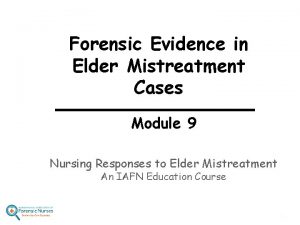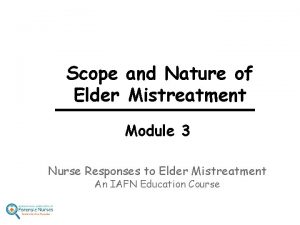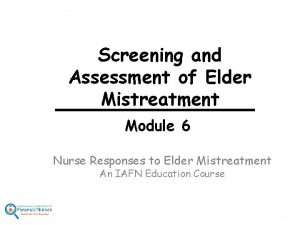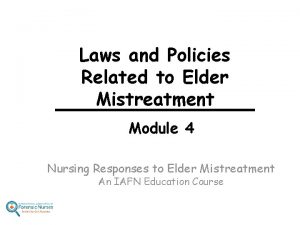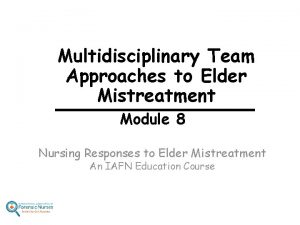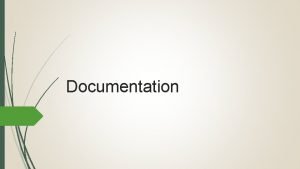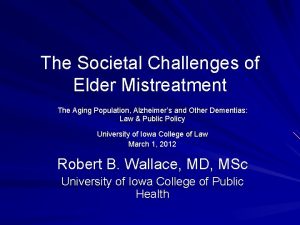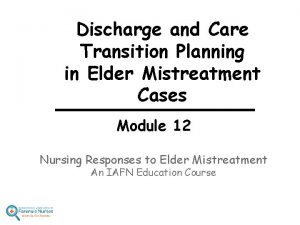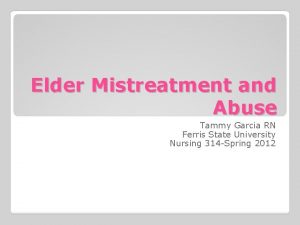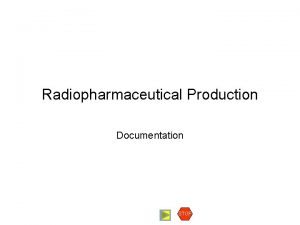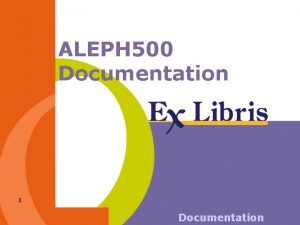Documentation in Elder Mistreatment Cases Module 11 Nursing




















- Slides: 20

Documentation in Elder Mistreatment Cases Module 11 Nursing Responses to Elder Mistreatment An IAFN Education Course

Learning Objectives In this module, participants will learn to: n n Discuss policies related to documentation in elder mistreatment cases Discuss fundamentals of medical record documentation Describe how to communicate findings to appropriate parties in each case, including responses to subpoenas Describe what to document in the medical record for elder mistreatment cases 2

Questions n n What do you currently do in terms of documentation when elder mistreatment is known or suspected? What forms does your practice setting use for documentation in these cases? What do you currently do in terms of communicating what has been documented with appropriate parties? Are there additional forms your practice setting uses for documentation for these parties? 3

Written Documentation n n A hallmark of thorough nursing care includes meticulous documentation in the patient medical record What is written in the patient medical record has forensic implications 4

Knowledge Foundation n Nursing standard of practice for health setting Documentation policies of health facility State and federal laws o Special protection of some medical records n n n o Drug and alcohol treatment Psychiatric records HIV records For initial reporting to the justice system, APS or other agencies 5

Fundamentals of Documentation Accuracy n Timeliness n Completeness n Appropriateness n 6

Accuracy n n n Legible Proper grammar and correct spelling Correct information Proper abbreviations Correct patient—make sure record includes additional identifying information if there are other patients in the health care system with same name Errors corrected properly 7

Example of Improper and Proper Correction of Medical Record 8

Timeliness n n Try to chart at the time that care is given Use of late entry (information added to medical record after initial charting was completed) o Should be labeled as a late entry o Indicate time/date when late charting occurred 9

Completeness Consent for care n Patient history n Exam/assessment findings n Evidence deposition n Care and contact with patient n Reporting and referrals made to other providers or agencies n 10

Completeness n n Completeness of documentation also means fully describing what is done, observed or heard and what is important to know Generally includes: o o Narrative description of physical and behavioral findings Full description of all injuries and forensic evidence, using written notes, body maps and photo-documentation as appropriate 11

Appropriateness Unless making a diagnosis, describe rather than label behavior n Avoid judgmental terms such as “non-compliant” or “refuses care” n Use health terms, not legal terms n 12

Communicating Findings n n Look to laws and policies to identify who needs to know what in which cases, procedures for communicating findings, and how to document communication in medical record If subpoenaed to testify as a witness: o o o Follow health care setting policy and state law for responding to a subpoena Clarify type of witness you would be: fact and/or expert. Prepare yourself to testify 13

Mrs. Simpson’s Case Document the following n n n What is known about the patient’s health status and presenting injuries (type, size, location and color) Any pertinent statements made by the patient or others who accompany the patient Any lab or diagnostic procedures that nurses think are necessary to further assess for mistreatment Additional questions to ask the patient to further detect or rule out mistreatment Possible strategies to enhance communications with her, given her speech impairment 14

Document Consent For medical care and examination n For photographs and evidence collection n For release of information to others n 15

Document Patient History n n n Description of mistreatment should include: o What happened o Time, place, mode and frequency o Whether objects were used o Identity of eyewitnesses Ask patients how they received injuries, even if patient is known to be non-verbal Verbatim statements 16

Document Physical Assessment n n n Vital signs, height, weight, general physical appearance, hygiene, demeanor, behavior during the exam and mental status Additional information from complete physical exam Description of wounds/and trauma Description of photographs taken and evidence collected and preserved Inclusion of photographs taken and body maps with locations of injury and physical trauma 17

Document Nursing Interventions n n Wound care Medications and other ordered treatments Reporting/referrals Discharge/care transition actions 18

Document Evidence Disposition n For example o Where evidence is being stored at the health facility o Details of evidence transfer (to whom, when, how, etc. ) 19

Closing Assessment n What have you learned from this module that you can apply to your practice setting? 20
 Criminal cases vs civil cases
Criminal cases vs civil cases Legal aspects of nursing documentation
Legal aspects of nursing documentation Legal aspects of documentation
Legal aspects of documentation Legal implications in nursing practice
Legal implications in nursing practice Chapter 7 documentation of nursing care
Chapter 7 documentation of nursing care Chapter 23 legal implications in nursing practice
Chapter 23 legal implications in nursing practice C device module module 1
C device module module 1 The hospital elder life program
The hospital elder life program Cfpb elder financial abuse
Cfpb elder financial abuse Modern life is impossible without travelling
Modern life is impossible without travelling Reporting elder abuse in maryland
Reporting elder abuse in maryland Foundations of faith elder cook
Foundations of faith elder cook Westchester county senior services
Westchester county senior services Justin elder
Justin elder Aps report san bernardino
Aps report san bernardino Duties of a deacon lds
Duties of a deacon lds Why did dhondu want to buy a chakki machine
Why did dhondu want to buy a chakki machine Migdal elder
Migdal elder Jeffrey r holland remember lot's wife
Jeffrey r holland remember lot's wife V elder brother
V elder brother Elder pac
Elder pac


